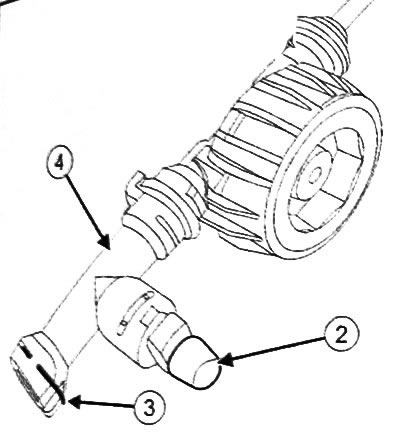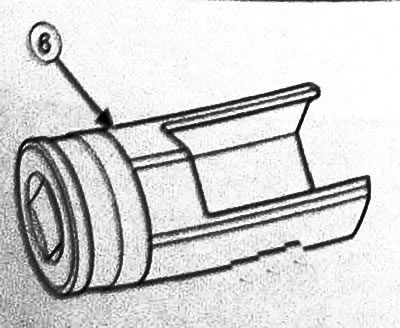Caution: When the pipe is disconnected, brake fluid may leak out. Appropriate measures must be taken to protect surrounding components.
Removing the clutch master cylinder
1. Place the vehicle on a two post lift.
2. Unscrew the mounting bolts and remove this engine tray.
3. Disconnect the brake fluid level sensor connector from the reservoir.
4. Remove the brake fluid reservoir cap.
5. Using a syringe, remove the brake fluid from the reservoir so that its level is below the outlet to the clutch master cylinder.
6. Plug the hole.
7. Place a rag under the clutch release cylinder.
8. Remove the cap from the bleed valve (2).

9. Press the latch (3).
Attention: Do not remove the retainer. In case of any mishandling of the retainer, the pipe must be replaced.
Note: When performing the following operation, some brake fluid will leak out.
10.Connect a transparent hose to the bleeder socket and mark an empty container under the bleeder.
11. While pressing the clutch pedal by hand, drain the brake fluid from the master cylinder and clutch pipe.
12. Remove the clutch master cylinder from the bulkhead by turning it in the engine compartment a quarter of a turn clockwise (bayonet connection) using a socket (24 mm) EMV. 1797 (6).

Clutch master cylinder installation
1. Check the condition of the seals. Replace seals if necessary.
Note: The clutch master cylinder can only be installed in one position.
Caution: Do not use the master cylinder outlet pipes as a support during installation.
2. Remove the plugs from the holes.
3. Install the clutch master cylinder into the bulkhead by turning a quarter of a turn counterclockwise (bayonet connection) using a socket (24 mm) EMB.1797
4. Further installation is carried out in the reverse order of removal.
Note:
- Lock hydraulic clutch line until it clicks into place.
- Lubricate both ends of the hydraulic clutch supply line to facilitate installation of the brake fluid reservoir outlet line.
- Fill the brake fluid reservoir to the correct level and bleed the clutch circuit.
